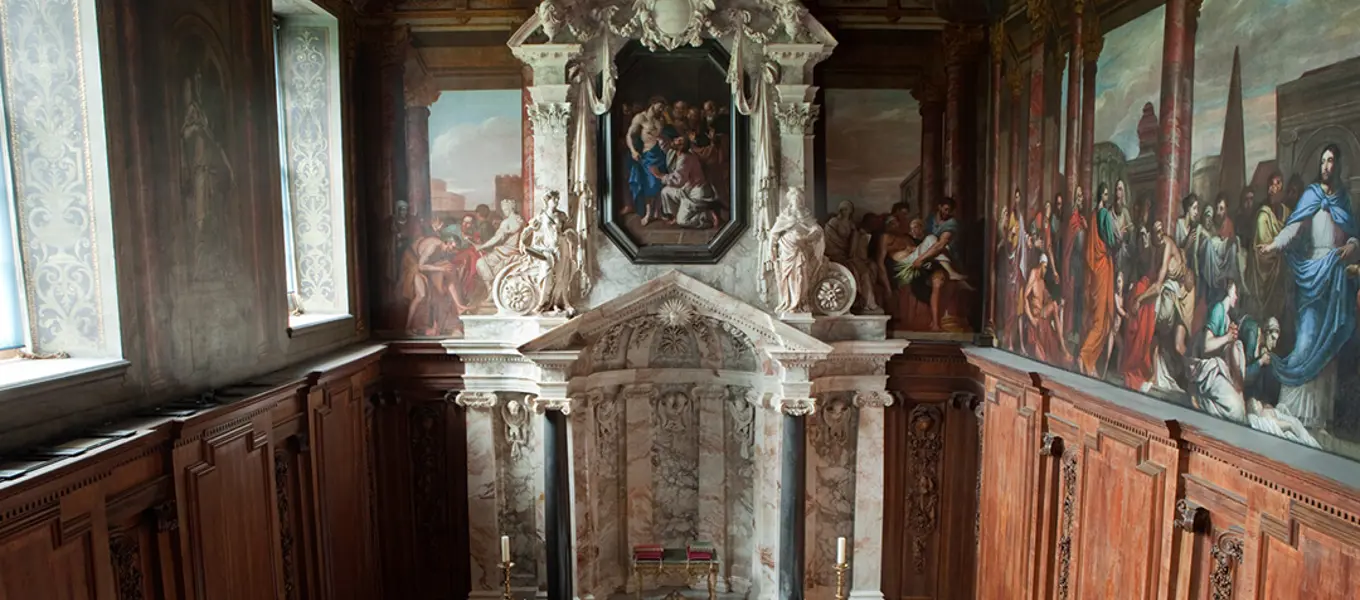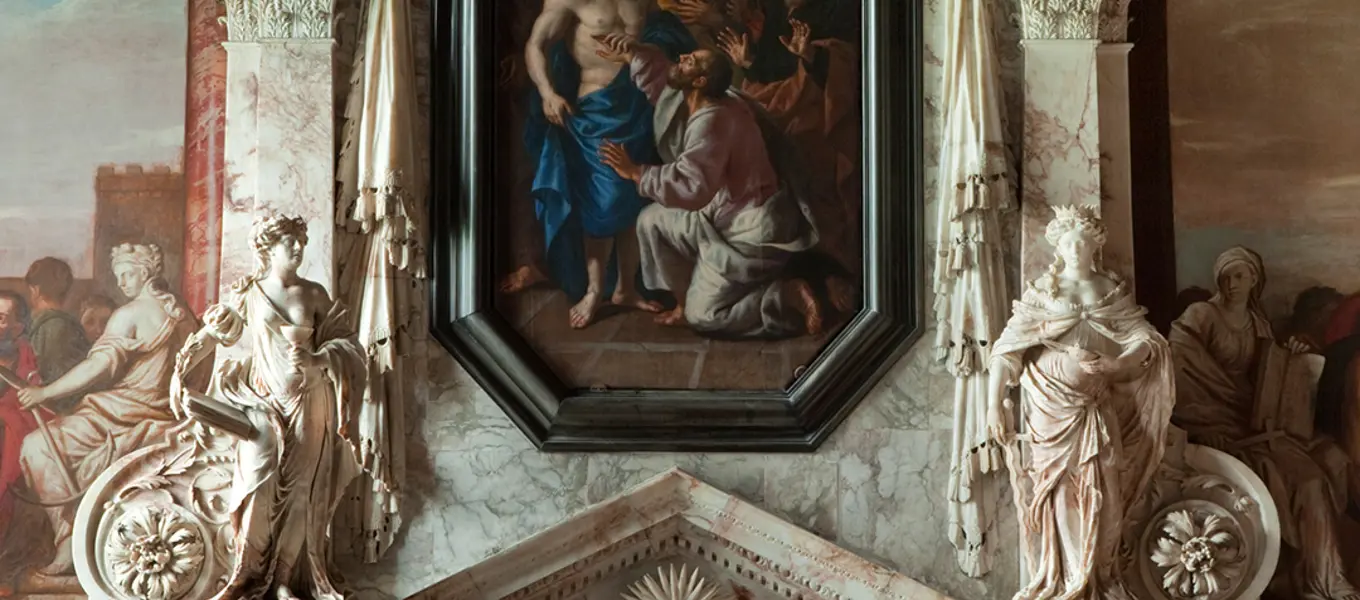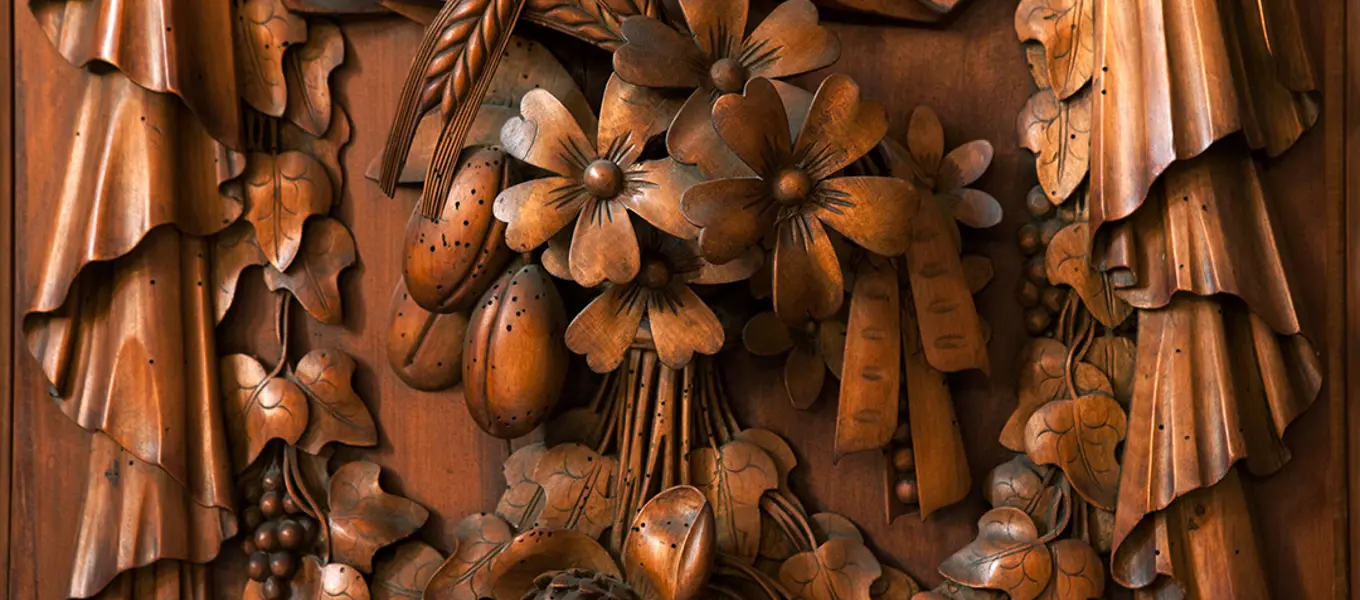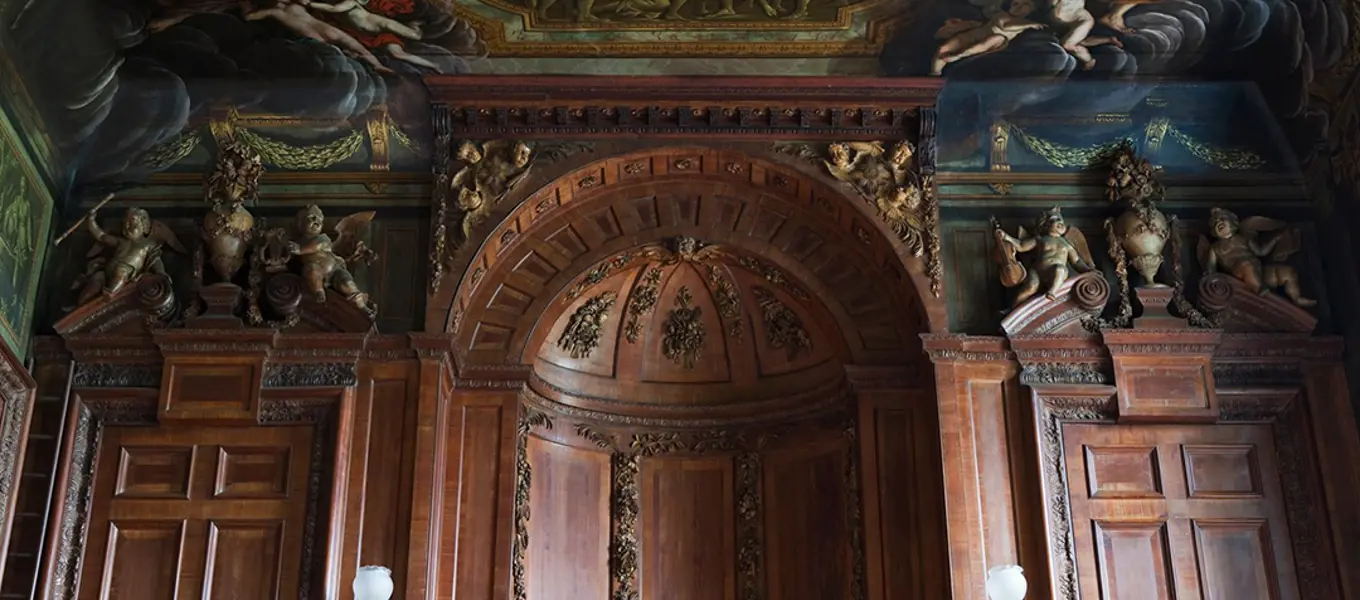The Chapel was built between 1688 and 1693, a year before the 4th Earl was created 1st Duke of Devonshire. It has remained almost completely unaltered ever since. Occupying the same location as the Elizabethan Chapel, this double-height space stands directly beneath the State Bedchamber and Closet above.
The altarpiece, constructed of alabaster quarried at Castlehayes near Tutbury in Staffordshire, and black marble from Sheldon moor above Ashford-in-the-Water some eight kilometres (five miles) away, is a tour-de-force of architecture and interior decoration by Chatsworth’s master carver Samuel Watson (1662-1715).

The Chapel Altar
Only the two standing figures of Justice and Faith are by another hand, the Danish sculptor Caius Gabriel Cibber (1630-1700), who was responsible for carving the majority of the garden statuary.

Faith (left) and Justice (right) by Caius Gabriel Cibber
Watson was also responsible for the carved pendants which enrich the cedar panelling. His drawings for these pendants, and many other carved details at Chatsworth, survive in the archives, as do the payments for many of the fittings of the 1st Duke’s house such as the £360 paid in London for the pair of large gilt-brass candlesticks that stand on the steps of the Altarpiece to this day.

Details from a carved panel by Samuel Watson
The focal point of the altarpiece is the oil painting of The Incredulity of St Thomas by Antonio Verrio (1639-1707). The painted decoration on the walls and ceiling is by Louis Laguerre and his assistant Ricard, both of whom had previously worked as Verrio’s assistants. The Royal Chapel at Windsor Castle, painted by Verrio a few years earlier, served as the inspiration for the painted decoration of the Chapel at Chatsworth.
The principal scene on the wall opposite the windows presents Christ Healing the Sick, which is believed to be a reference to the restoration of the nation’s religious health by the removal of a Catholic King (James II) from the throne. The 1st Duke employed a Chaplain, and the household staff would have attended daily prayers, sitting in the body of the Chapel whilst the family would have been in the Gallery above.

The view up to the Chapel Gallery
Explore more...
Painted Hall
Used to welcome and impress guests, this was the largest and grandest room built by the 1st Duke.
Oak Room
This room was completely changed by the 6th Duke with the wood panelling he bought at an auction.
State Drawing Room
The second room of the State Apartment, a suite of rooms intended to host a king.
State Bedchamber
One of the most private rooms in the State Apartment, this room was more lavishly decorated than all the others and features the State Bed.
Old Master Drawings Cabinet
This room was designed to display Old Master Drawings.
North Sketch Gallery
The North Sketch Gallery, created in 2009, showcases contemporary art and ceramics.
Oak Stairs/Leicester Landing
The stairs were created when the 6th Duke added the North Wing. They connected the old part of the house to the new.
Library and Ante Library
There are over 17,000 books in these two rooms. The whole Chatsworth book collection numbers around 40,000 volumes.
Great Dining Room
Built as part of the 6th Duke’s renovation, this room is still used for formal dinners.
Sculpture Gallery
Built by the 6th Duke, the gallery contains one of the foremost early 19th century contemporary collections of sculpture.
History of Chatsworth
Learn about the Devonshires and discover how they shaped the history of the house, garden and collection that we see today.
History of the garden
The garden evolved over nearly 500 years. Discover its history and the people who shaped it.
The Devonshire Collections
Discover highlights from the art, library and archive that make up the Devonshire Collections.
The House
Learn more about what's on in the house.



